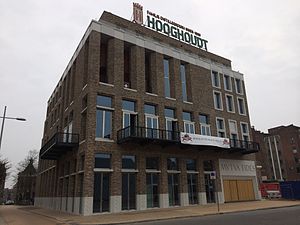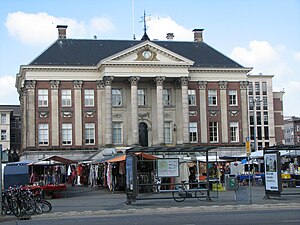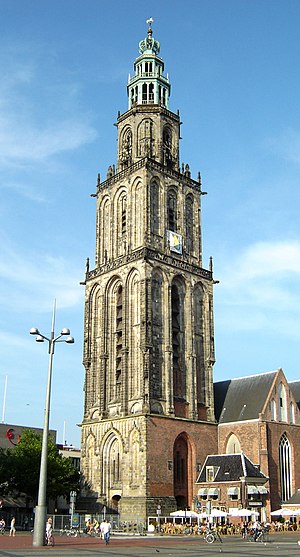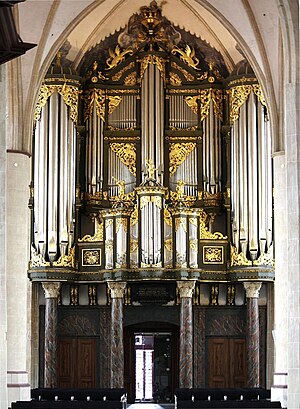Country:
Region:
City:
Latitude and Longitude:
Time Zone:
Postal Code:
IP information under different IP Channel
ip-api
Country
Region
City
ASN
Time Zone
ISP
Blacklist
Proxy
Latitude
Longitude
Postal
Route
Luminati
Country
Region
gr
City
leek
ASN
Time Zone
Europe/Amsterdam
ISP
SURF B.V.
Latitude
Longitude
Postal
IPinfo
Country
Region
City
ASN
Time Zone
ISP
Blacklist
Proxy
Latitude
Longitude
Postal
Route
db-ip
Country
Region
City
ASN
Time Zone
ISP
Blacklist
Proxy
Latitude
Longitude
Postal
Route
ipdata
Country
Region
City
ASN
Time Zone
ISP
Blacklist
Proxy
Latitude
Longitude
Postal
Route
Popular places and events near this IP address

Groningen
City and municipality in the Netherlands
Distance: Approx. 376 meters
Latitude and longitude: 53.21888889,6.5675
Groningen ( GROH-ning-ən, UK also GRON-ing-ən, Dutch: [ˈɣroːnɪŋə(n)] ; Gronings: Grunn or Grunnen [ˈχrʏnn̩]) is the capital city and main municipality of Groningen province in the Netherlands. Dubbed the "capital of the north", Groningen is the largest place as well as the economic and cultural centre of the northern part of the country; as of December 2021, it had 235,287 inhabitants, making it the sixth largest city/municipality in the Netherlands and the second largest outside the Randstad. Groningen was established more than 950 years ago and gained city rights in 1245.
University of Groningen
Public university in Groningen, the Netherlands
Distance: Approx. 415 meters
Latitude and longitude: 53.21916667,6.56277778
The University of Groningen (abbreviated as UG; Dutch: Rijksuniversiteit Groningen, abbreviated as RUG) is a public research university of more than 30,000 students in the city of Groningen in the Netherlands. Founded in 1614, the university is the second oldest in the country (after Leiden). The University of Groningen has eleven faculties, nine graduate schools, 27 research centres and institutes, and more than 175-degree programmes.

Groninger Studentencorps Vindicat atque Polit
Dutch student association
Distance: Approx. 413 meters
Latitude and longitude: 53.218717,6.568542
The Groninger Studenten Corps Vindicat atque Polit (Latin for Uphold and Refine (lit. (The sword) avenges and (the file) scrapes)) is the second oldest Dutch student association and was founded on February 4, 1815, as a reaction to attacks on students from local citizens. The first rector of the senate was B.J. Winter.

Martinikerk (Groningen)
Church in Groningen , Netherlands
Distance: Approx. 361 meters
Latitude and longitude: 53.21916667,6.56833333
The Martinikerk (Martin's church) is the oldest church in Groningen, Netherlands. The church and its associated tower (the Martinitoren) are named after Saint Martin of Tours (316–397), the patron saint of the Bishopric of Utrecht to which Groningen belonged. The church was a cathedral for a short period during the first bishopric of Groningen (1559–1594).
Martinitoren
Church building in Groningen, Netherlands
Distance: Approx. 350 meters
Latitude and longitude: 53.21921,6.568
The Martinitoren (Dutch pronunciation: [mɑrˈtinitoːrə(n)]; Martini or St. Martin's Tower) is the tallest church steeple in the city of Groningen, Netherlands, and the bell tower of the Martinikerk. The tower is located at the north-eastern corner of the Grote Markt (Main Market Square).

Battle of Groningen
Second World War battle from April 14–18, 1945
Distance: Approx. 404 meters
Latitude and longitude: 53.2186,6.5672
The Battle of Groningen took place during the penultimate month of World War II in Europe, on 13 to 16 April 1945, in the city of Groningen. The 2nd Canadian Division attacked Groningen (though the whole division was never in combat at any given time), defended by 7,000 German soldiers and Dutch and Belgian SS troops. There were also many Luftwaffe troops manning flak guns in the area.

Praedinius Gymnasium
Distance: Approx. 368 meters
Latitude and longitude: 53.2211,6.5716
Praedinius Gymnasium is a gymnasium in Groningen, the Netherlands. It dates back to the fourteenth century and is the larger of two non-comprehensive gymnasia in Groningen, the other being Willem Lodewijk Gymnasium.

Prinsentuin (Groningen)
Renaissance-style garden in the Netherlands
Distance: Approx. 176 meters
Latitude and longitude: 53.22166667,6.56888889
The Prinsentuin (English: Prince's garden) or, Prinsenhoftuin is a garden built in renaissance style that is located in Groningen, behind the Prinsenhof. This Garden consists of a rose garden, a herb garden, a part with berceaus and a sundial on the wall above the entrance. The letters 'W' and 'A', the beginletters of stadtholder Willem Frederik of Nassau and his wife Countess Albertine Agnes of Nassau, are planted in the Prinsentuin to, using hedges.

Siege of Groningen (1672)
1672 battle in the Franco-Dutch War
Distance: Approx. 404 meters
Latitude and longitude: 53.2186,6.5672
The Siege of Groningen was a battle that took place in 1672 during the Franco-Dutch war. It was a Dutch victory that ended all hope of the Bishop of Münster to push deeper into the Netherlands. The Münster army was so weakened by the defeat that the Dutch army successfully reconquered much of the land that Münster had conquered just weeks earlier.

Broerkerk
Church in Groningen, Netherlands
Distance: Approx. 431 meters
Latitude and longitude: 53.21888889,6.56305556
The Broerkerk in Groningen, Netherlands, was a medieval church connected to the Franciscan cloister in Groningen. The church was situated in the Broerstraat in Groningen. The Broerkerk was the first church in the town used by the Protestants.

Groningen City Hall
Seat of local government in Groningen
Distance: Approx. 431 meters
Latitude and longitude: 53.21833333,6.56666667
Groningen City Hall is the seat of government in Groningen, the Netherlands. The city council meets in a modern room downstairs, but upstairs in the former raadszaal the Gulden Boek is kept that lists the honored citizens of the town.
Organ in the Martinikerk at Groningen
Historic organ in Groningen, Netherlands
Distance: Approx. 361 meters
Latitude and longitude: 53.21916667,6.56833333
The west gallery organ of the Martinikerk in Groningen dates from the 15th century; it took its present form in the 18th century when it was expanded by Arp Schnitger, his son Franz Caspar Schnitger and his successor Albertus Antonius Hinsz. It has 52 speaking stops on three manuals and pedal, and is one of the largest and most famous baroque organs in Northern Europe.
Weather in this IP's area
scattered clouds
10 Celsius
10 Celsius
8 Celsius
10 Celsius
1029 hPa
73 %
1029 hPa
1028 hPa
10000 meters
0.51 m/s
110 degree
31 %
07:36:18
16:58:13

